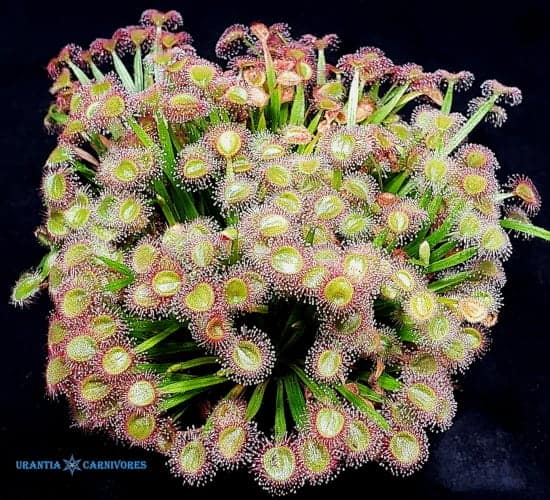
Drosera Petiolaris Complex
Segment Lasiocephala – Planchon (Marchant and George 1982), from the Greek lasios = bushy
what’s more, kephalé = head (alluding to the bushy appearance of the focal point of the rosette), incorporates
14 tropical Drosera species (likewise called the Wooly Sundews): 13 perpetual (D. brevicornis, D. broomensis, D. caduca, D. darwinensis, D. derbyensis, D. dilatato-petiolaris, D. falconeri, D. fulva, D. kenneallyi, D. lanata, D. ordensis, D. paradoxa and D. petiolaris) and just one yearly (D. banksii). These species fill primarily in the Northern Australian tropical areas, with just two species filling in New Guinea, and together establish the Drosera petiolaris complex. Their fundamental trademark is a long petiole ending in a leaf lamina of various widths, with a circular, reniform or orbicular shape, which comprises the genuine snare. The petiole, in a large portion of the species, is covered with white non-glandular hairs, which can be either dendritic (expanded with more limited hairs developing from the primary hair’s stem) or straightforward.
The blossom scape is 5 to 45 cm high, bearing a raceme inflorescence with various blossoms, going from at least 10 to more than 70, and is pretty much bushy relying upon the species. The blossoms are white to pink, going from 0.5 to 2 cm in distance. A specific highlight that can be seen with an unaided eye is a huge implication of the pointer.
Until a couple of years prior additionally D. caledonica, endemic to New Caledonia, was set in something similar bunch. This species additionally has petiolated, bristly leaves yet it shows diverse morphological components of the leaf and blossoms, just as an alternate germination design. Ongoing phylogenetic examines (Rivadavia, Kondo, Kato, Hasabe) prohibit D. caledonica from segment Lasiocephala, furthermore, remember it for the segment Drosera, in branches near D. rotundifolia. They are altogether great plants however difficult to develop, partially, because of the restricted and ongoing dispersion among producer lovers. Today, a couple of assurances and numerous harsh conclusions on the developing technique are being talked about. Indeed, even Allen Lowrie, one of the most significant Australian botanists who has depicted, developed and sells large numbers of these species, reports in his most recent notes about development “…we are as yet trying different things with different strategies on the off chance that you discover novel thoughts that you feel would assist us with developing these plants better, if it’s not too much trouble, let me know your encounters”.
In the wild, a hot and wet season, when the types of the petiolaris-complex vegetate, is trailed by a hot however very dry season during which these perpetual species go torpid.
The best technique for development ought to be to regard the states of this life cycle, yet entirely it’s difficult; Allen Lowrie reports that in development, during the torpidity, he can’t keep plants alive in thoroughly dry conditions.
With such countless vulnerabilities in development procedures, I will attempt to give, as plainly as could really be expected, data about living space, climate conditions, portrayals of the single species and, considerably more significantly, all the data on the diverse development techniques, contrasting the various assessments of fledglings and master cultivators. I’m very certain that toward the finish of this article you will be much more confounded, yet with an overall outline on the present status of development approaches, all of you could take the various ideas and tips of this article as a beginning stage to start the development of these plants.
Their environments are prairies and shallow wet sorrows, the banks of lakes, occasional streams, and lowlands just as regions next to springs and waterways. They frequently fill in radiant regions among bushes and in meager woods, on sandy-clayey soils (see photograph on this page).
The vital climate normal for these spaces is to have a blistering and exceptionally dry season followed by a hot and extremely wet one.
The mid-year wet season is from December until April and is described by high precipitation, extremely high moistness and high temperatures (at soil level it can arrive at 50 °C), with little contrast between the base and greatest temperatures in a 24 hours time frame.
In actuality, from May to December is the colder time of year dry season and this is portrayed by somewhat cooler temperatures (particularly the lower ones) and basically no downpour. For a couple of months, the main wellspring of mugginess comes from the morning mist and from the water gathered in soil sorrows. (See photographs from pages 10 to 15).
In the accompanying table are instances of certain information about temperature, precipitation, and mugginess levels from April 2006 to March 2007, recorded at the Darwin’s climate station in the Northern Territory.
Instances of normal qualities estimated during a 62-year time frame – from 1941 until 2002-are in square sections (source: site of Bureau of Meteorology, Australian Government http:// www.bom.gov.au and http://www.viaggiatori.net/turismoestero/Australia/clima/Darwin). Of specific note is that from May work November 2006 there were just 12 blustery days, with a all out of 74.2 mm of water, while from December to April of the next year there were 113 blustery days, bringing about an aggregate of 1945.26 mm of water
As currently expressed, the petiolaris-complex sundews effectively develop during the wet season, while staying lethargic during the dry one. Generally, it’s feasible to indentify 2 gatherings:
1. Species which, throughout the colder time of year, produce dynamically more modest leaves with fluctuating measures of hairs, and as a rule these leaves are not meat eating, regularly covering each other to shape a minimal rosette (D. brevicornis, D. broomensis, D. darwinensis, D. derbyensis, D. fulva, D. lanata, D. ordensis)
2. Species which, throughout the colder time of year, totally vanish subterranean, making bulb-like structures, like those of Dionaea, shaped by the development of the foundations of the old plump leaves (D. caduca, D. falconeri, D. kenneallyi).
D. petiolaris and D. dilatato-petiolaris conduct is in the middle of these two gatherings. The regular type of D. paradoxa, even with the diminished size of the leaves and the increment of hair inclusion during the torpid period, actually has a functioning vegetative zenith. It must be noted however, that the lethargic period is diverse for every species, and it additionally relies upon the mugginess accessible at the developing site. Plainly these various transformations help the plants in shielding themselves from the sun’s hotness, and to diminish the deficiency of stickiness by happening.
The plants in the main gathering, which for the most part live in drier territories, ordinarily have dendritic hairs which have the extra capacity of expanding the outer layer of the leaf to catch as much air mugginess as could really be expected and pass on it by gravity to the focal point of the rosette.
At the point when the primary downpour comes, lethargy is broken and the plant rapidly delivers new leaves and new white, thick and meaty roots; a few animal categories produce blossom scapes during this period. The main yearly species is D. banksii and this beginnings its developing cycle with the germination of the seed after the main rains, and lives until the finish of the wet season and some of the time considerably longer on the off chance that it fills in territories ready to hold water and moistness.

Drosera Brevicornis
Click Here To See More
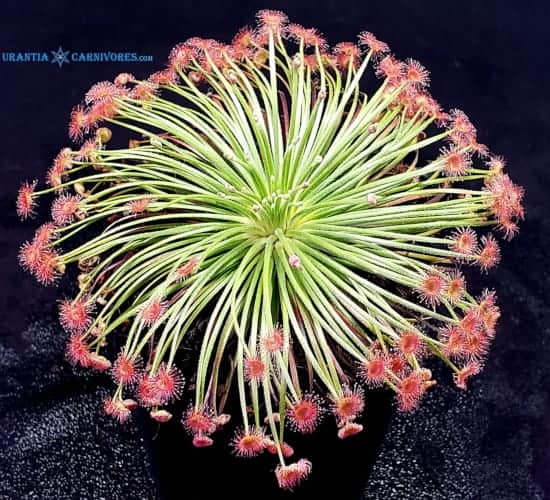
Drosera Broomensis
Click Here To See More
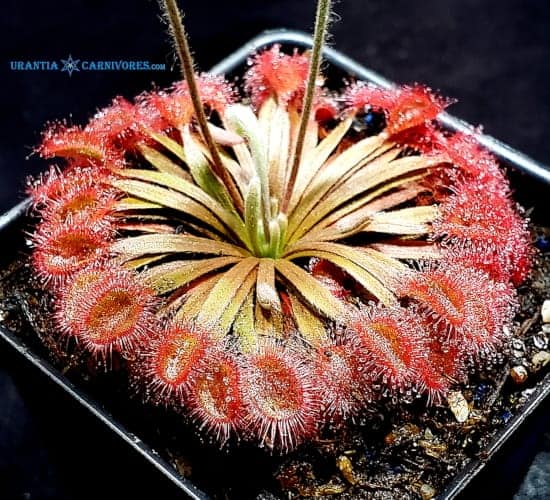
Drosera Darwinensis
Click Here To See More
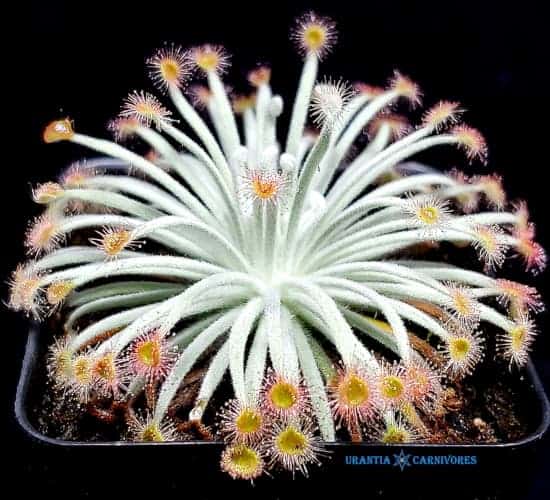
Drosera Derbyensis
Click Here To See More

Drosera Dilatato-petiolaris
Click Here To See More
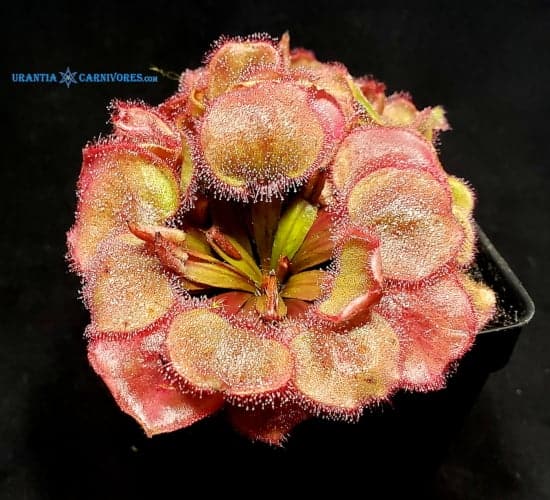
Drosera Falconeri
Click Here To See More
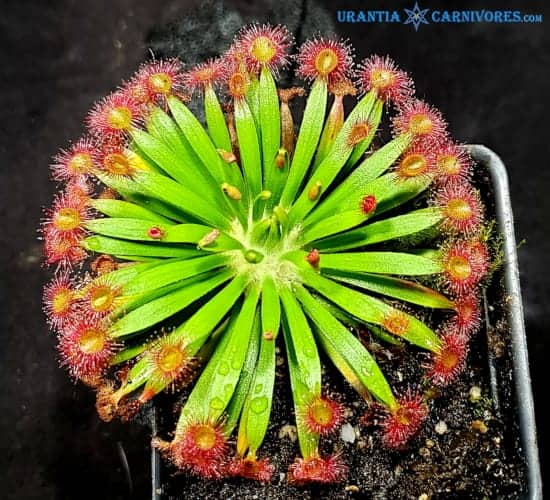
Drosera Fulva
Click Here To See More

Drosera Kenneallyi
Click Here To See More
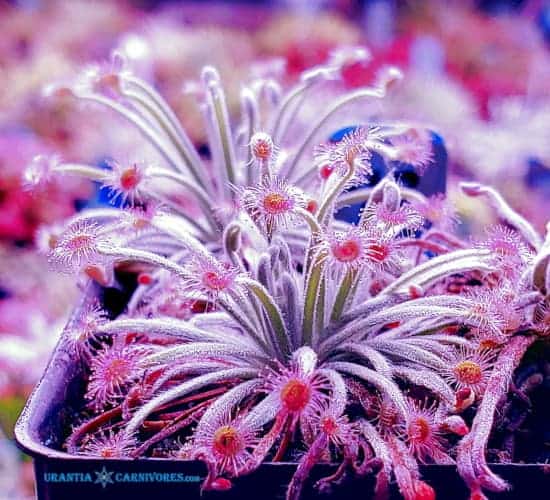
Drosera Lanata
Click Here To See More

Drosera Ordensis
Click Here To See More

Drosera Petiolaris
Click Here To See More
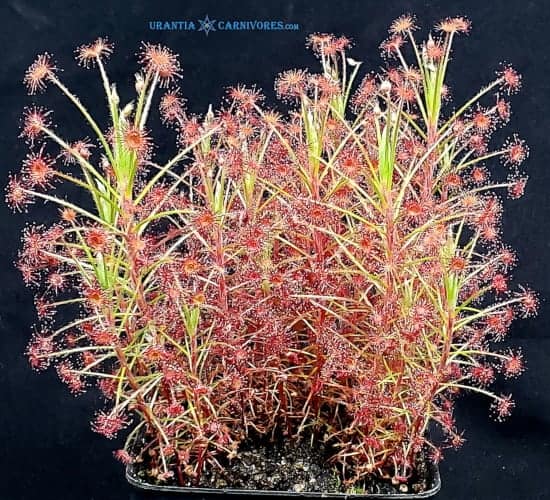
Drosera paradoxa
Click Here To See More
©Urantia Carnivores LLC
